Delaware kayaking guide: Best spots to paddle, how to stay safe
With a coastal state like Delaware, it’s no surprise Delaware’s multitude of waterways lend themselves to kayaking adventures aplenty, and if you haven’t caught this wave yet, you better jump on it.
Whether you consider yourself a seasoned pro or a newcomer to the water, here’s a guide to kayaking in Delaware that includes safety tips and some of the best local spots to paddle out.
What to know before you go kayaking
Jetting into the open water as soon as your feet hit the shore might sound enticing, but there are a few things to note before you take your kayak out for a cruise.
When it comes to water activities like kayaking, it’s important to always check the weather, water levels of inland bodies of water and tidal conditions before heading out. You don’t want to end up in a torrential downpour far from shore or get caught in choppy waters.
Non-motorized kayaks do not require registration, but those with trolling motors do.
A personal floatation device is required for each person on a kayak or canoe. It must be approved by the U.S. Coast Guard, be the correct size for the wearer and be in serviceable condition. Children under 14 years of age must wear a PFD at all times while paddling or as a passenger, according to Kayak Guru.
In Delaware, boating under the influence is illegal and includes alcohol and drug use. Action can be taken if your blood alcohol level is found to be 0.08% or greater.
In case of emergency situations, visual distress signals are required on kayaks if paddling on coastal waters, and one to three of these devices is required depending on vessel length, according to the U.S. Coast Guard.

Examples of a daytime VDS include a signal mirror, which all personal floatation devices should have attached or in a pocket; an orange smoke canister, which can be seen from air or sea and smoke for 30 to 60 seconds; and a sea rescue, a long, bright orange banner that floats out from a kayak and is used to get the attention of rescuers.
A white light, which can be a flashlight, lantern or headlamp, is required to be displayed while paddling at night on any waters. While a strobe light is universally recognized as a distress signal and is good to have on board, it does not meet the requirements for a visual distress signal, according to TopKayaker.
Other VSDs used at night include:
Aerial flares, which are handheld and can send a signal between 300 and 500 feet.
Parachute flares, which fall slower than an aerial flare and are good for long-distance or open-water rescue efforts.
Flare pistols, which shoot higher and brighter than both aerial and parachute flares.
All kayakers are also required to carry a whistle or approved sound-making device. Three short busts on a whistle signal “help,” which can be remembered by thinking of the three-letter distress signal “S.O.S.”
Other sound-signaling devices include:
A foghorn or airhorn
A VHF marine radio. These have different channels used by important marine organizations and monitored 24/7 by the local Coast Guard.
Cell phones. If you opt to bring your phone on board, keep it in a dry-bag case or box while on the water.
A two-way radio, which commonly is pocket-size and has a range of about 2 miles.
An Emergency Position Indicating Radio Beacon (EPIRB) and Personal Location Beacon (PLB) are two devices that emit a distress signal that is picked up by a satellite. This signal is then forwarded to the appropriate authorities.
Whichever safety devices you choose to invest in, practice how to use them, check their batteries and properly store them before venturing out on the water.
Where to go kayaking in Delaware
Now that we’ve got the basics out of the way, sit back, relax and enjoy these local water views you can paddle through.
Brandywine Creek State Park, near Centreville
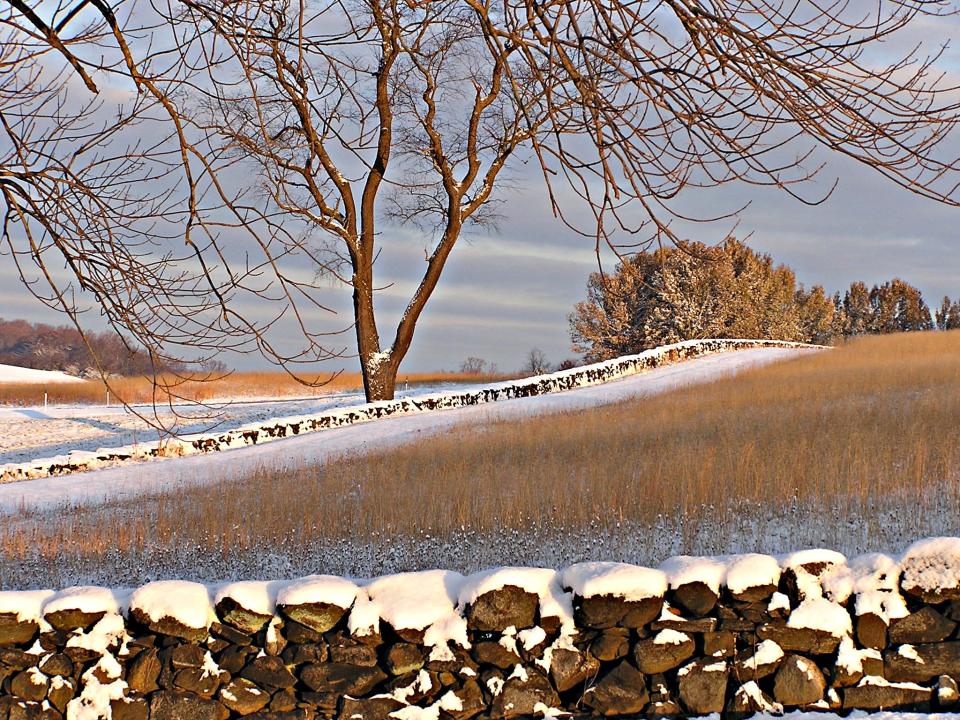
Flowing through the state of Delaware, Brandywine passes by Chadds Ford and eventually joins with the Christina River above the confluence at the Delaware River in Wilmington.
In 1777, the riverbanks were the setting of the Battle of the Brandywine during the American Revolutionary War.
Today, a kayaking expedition will afford you views of bluegill and crappie in the creek, rolling meadows, nesting birds and rare native plants.
41 Adams Dam Road., near Centreville, (302) 577-3534; destateparks.com/brandywinecreek
Cape Henlopen State Park, near Lewes
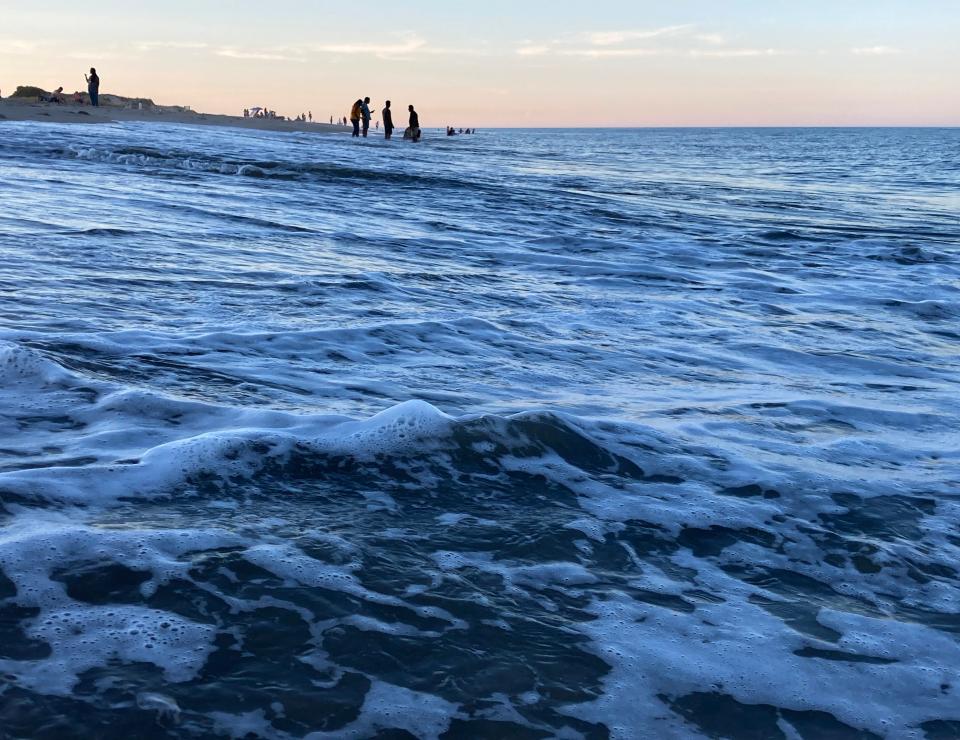
Cape Henlopen State Park in Lewes was declared for common use by William Penn around 1682. Since then, the park’s domain has served as a beloved Delaware gem for all who stop by.
Kayakers can enjoy plenty of beautiful views, including the historic Cape Henlopen Lighthouse that is no longer in use.
Aside from a journey through the waves, paddlers can go for a quick swim in the ocean, camp for an overnight or lounge on the beach all afternoon.
Cape Henlopen Drive, near Lewes, (302) 645-8983: destateparks.com/Beaches/CapeHenlopen
Delaware Seashore State Park, near Rehoboth Beach

Delaware Seashore State Park offers a variety of kayaking options filled with scenic landscapes you won’t want to miss.
Visitors can access the Indian River, Little Assawoman Bay and shallow waters in the Rehoboth Bay from the location.
Savage Ditch, one of several places to launch at the park, gives way to views of local islands like Burton Island Nature Preserve and birdwatching spots.
25039 Coastal Highway, nea Rehoboth Beach, (302) 227-2800; www.destateparks.com/Beaches/DelawareSeashore
To do at Delaware Seashore State Park: Delaware Seashore State Park guide: 5 things to do, admission, eats and more
Mispillion River, Milford
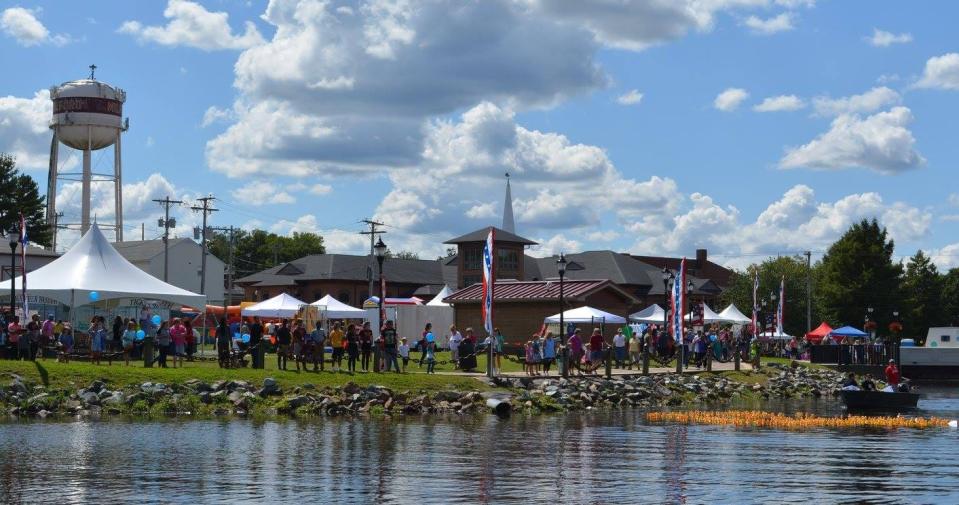
The Mispillion River in Milford winds from the city to the Delaware Bay and is accessible by a public boat ramp located behind the police department.
Kayakers will find plenty of opportunities to view wildlife, including passing through the Milford Neck Wildlife Area, along the 15-mile ride.
For a lengthy excursion, consider checking out the six-hour journey to the take-out at the Slaughter Beach boat ramp on Cedar Creek.
Fenwick Island State Park, Fenwick Island
Fenwick Island State Park grants kayakers access to inland bays with stunning open water views.
Bethany Beach sits to the north of the location while Ocean City, Maryland and Fenwick Island lie to the south.
Kayakers will find the waters calmer, and less crowded, than other locations around the state. Coastal breezes off the Atlantic Ocean and dozens of waterfront homes to ogle make this a scenic route fit for anyone looking for a relaxing paddle.
Route 1, Fenwick Island, (302) 227-2800; destateparks.com/Beaches/FenwickIsland
Lums Pond State Park, near Glasgow
Near Glasgow, Lums Pond State Park not only has great nature views, but also features a zipline course for any kayakers looking for some entertainment while on the water.
After you drag your kayak back to shore, consider going on a hike or cycling through the park’s trails. Pets can come, too!
1068 Howell School Road, Bear, (302) 368-6989; destateparks.com/pondsrivers/LumsPond
Killens Pond State Park, near Felton
Killens Pond is a 66-acre millpond offering a peaceful place to paddle.
Resident nesting bald eagles are frequently spotted, and a list of other wildlife, including several fish species, are common sights.
Visitors can paddle around the lake or head up the Murderkill River on the canoe trail.
3015 Paradise Alley Road, near Felton, (302) 284-3412; destateparks.com/PondsRivers/KillensPond
ICYMI: Have you ever been on the Cape May-Lewes Ferry? Here's everything you need to know
Trap Pond State Park, near Laurel
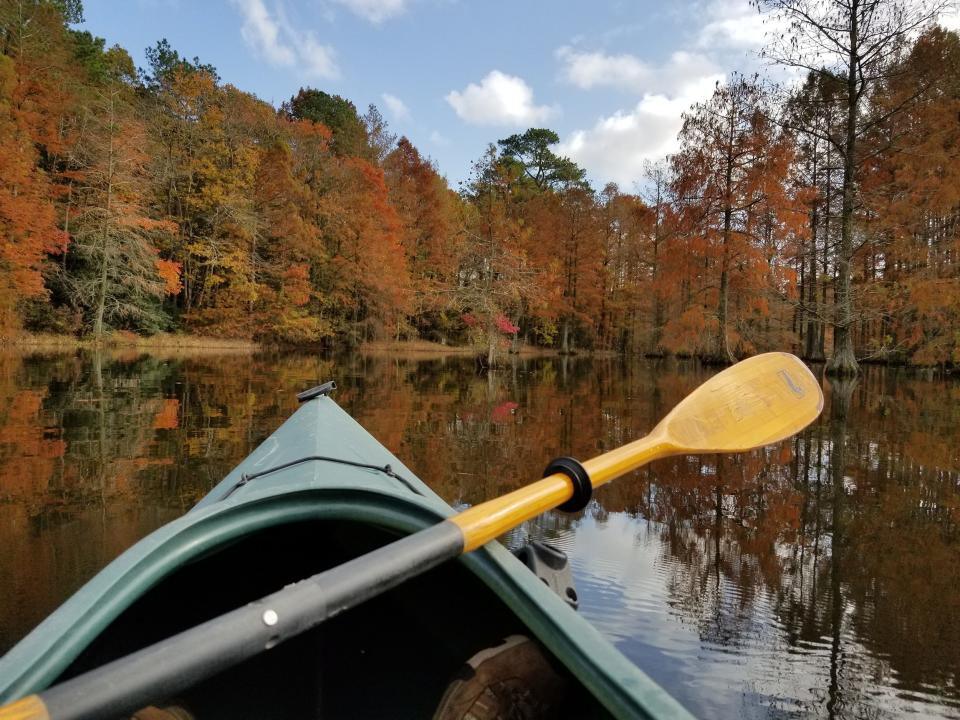
Trap Pond State Park in Laurel offers a bald cypress swamp for visitors to enjoy, along with several other natural attractions.
Kayakers can enjoy the Terrapin Branch Water Trail and get an inside look at all wildlife and vegetation in the area. Birds are a fan-favorite visitor to spot, and you can learn more about which winged friends you spotted by visiting the nature center after your paddle.
The picnic amenities on-site would be a great way to spend your midday paddle break.
33587 Baldcypress Lane, near Laurel, (302) 875-5153; destateparks.com/TrapPond
Fort DuPont State Park, Delaware City
If you’re seeking a spot to launch into the Delaware River, Fort DuPont State Park might be just for you.
Most of the Delaware River flows outside of state lines, but from launching site within the park, you can paddle by pieces of Delaware history and explore the surrounding canals
Beach parking details: Beach season is near. Here's your guide to parking at the Delaware beaches for 2023.
Pea Patch Island, in the middle of the Delaware River, is accessible from the park and is a fun choice for anyone wanting to see the wild bird refuge up close.
Remember that you can’t land on the island unless you’re a passenger on the ferry, though.
Wilmington Avenue, Delaware City, (302) 834-7941; destateparks.com/History/FortDupont
Broadkill River, Milton
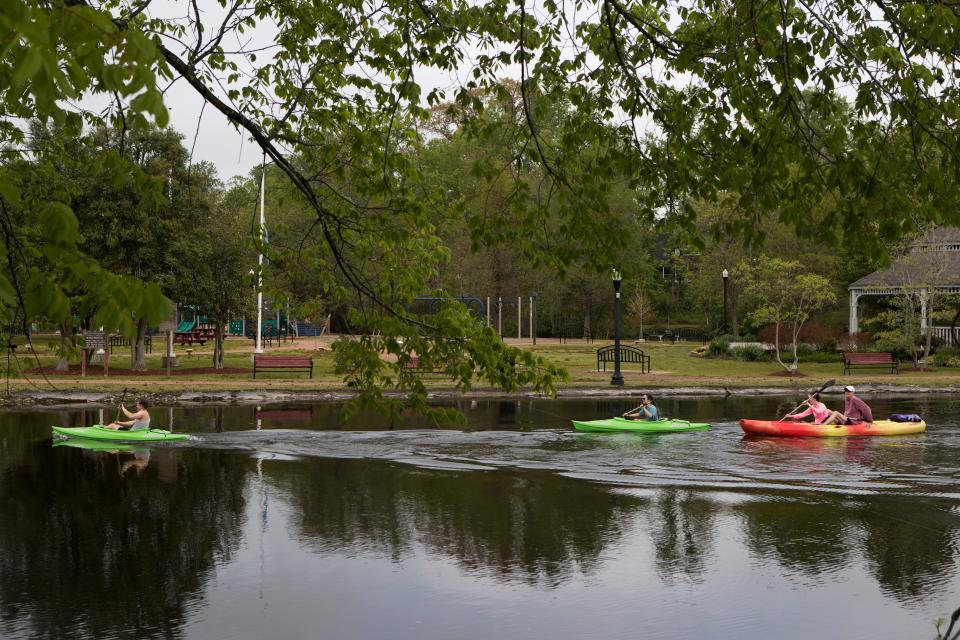
Milton’s Broadkill River flows from the town and empties into the Delaware Bay.
Kayakers interested in this route can launch at the public ramp located at Milton Memorial Park before flowing through coastal marshes, forests and the Edward H. McCabe Nature Preserve.
If you’re feeling adventurous, you can paddle the five hours to Lewes and head out into the bay at Roosevelt Inlet.
Rehoboth Bay, Rehoboth Beach
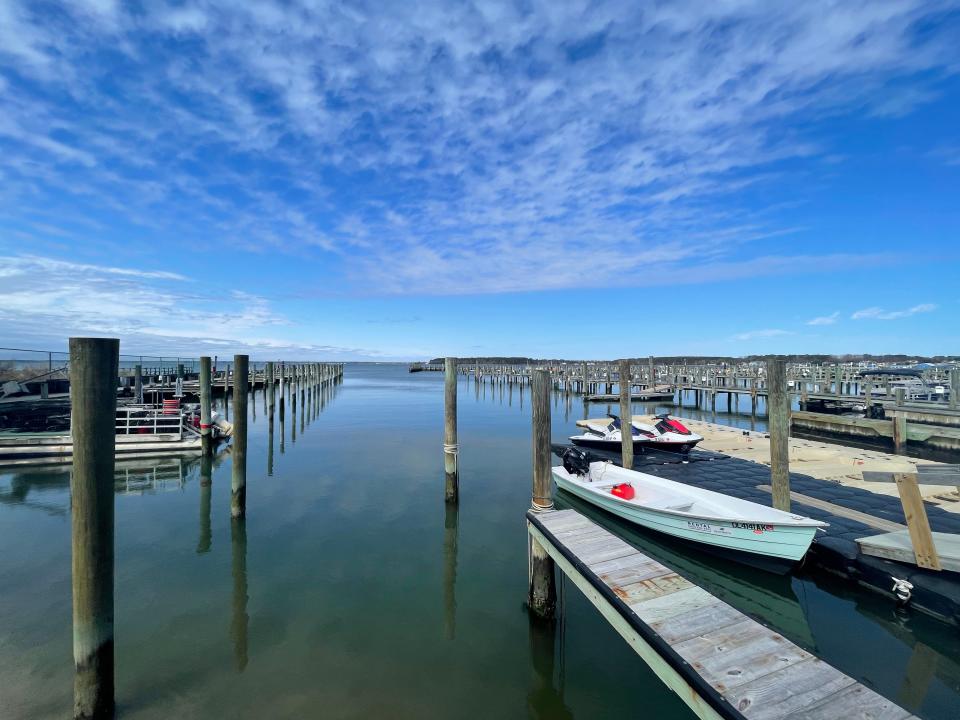
The Rehoboth Bay in Sussex County is one of the state’s water bodies that connects to several other waterways, such as the Lewes and Rehoboth Canal, which connect to the Broadkill River.
In the south, the bay connects to the Indian River Bay before combining to form a tidal exchange to the Atlantic Ocean through the Indian River Inlet.
Kayakers can launch at the Rehoboth Bay Marina or at Dewey Beach, where creeks and canals can be explored. Ancient burial sites on Thompson Island and wildlife (including bald eagles) are markers to keep an eye out for.
Got a tip or a story idea? Contact Krys'tal Griffin at kgriffin@delawareonline.com.
This article originally appeared on Delaware News Journal: Where to kayak in Delaware and how to stay safe on the water

